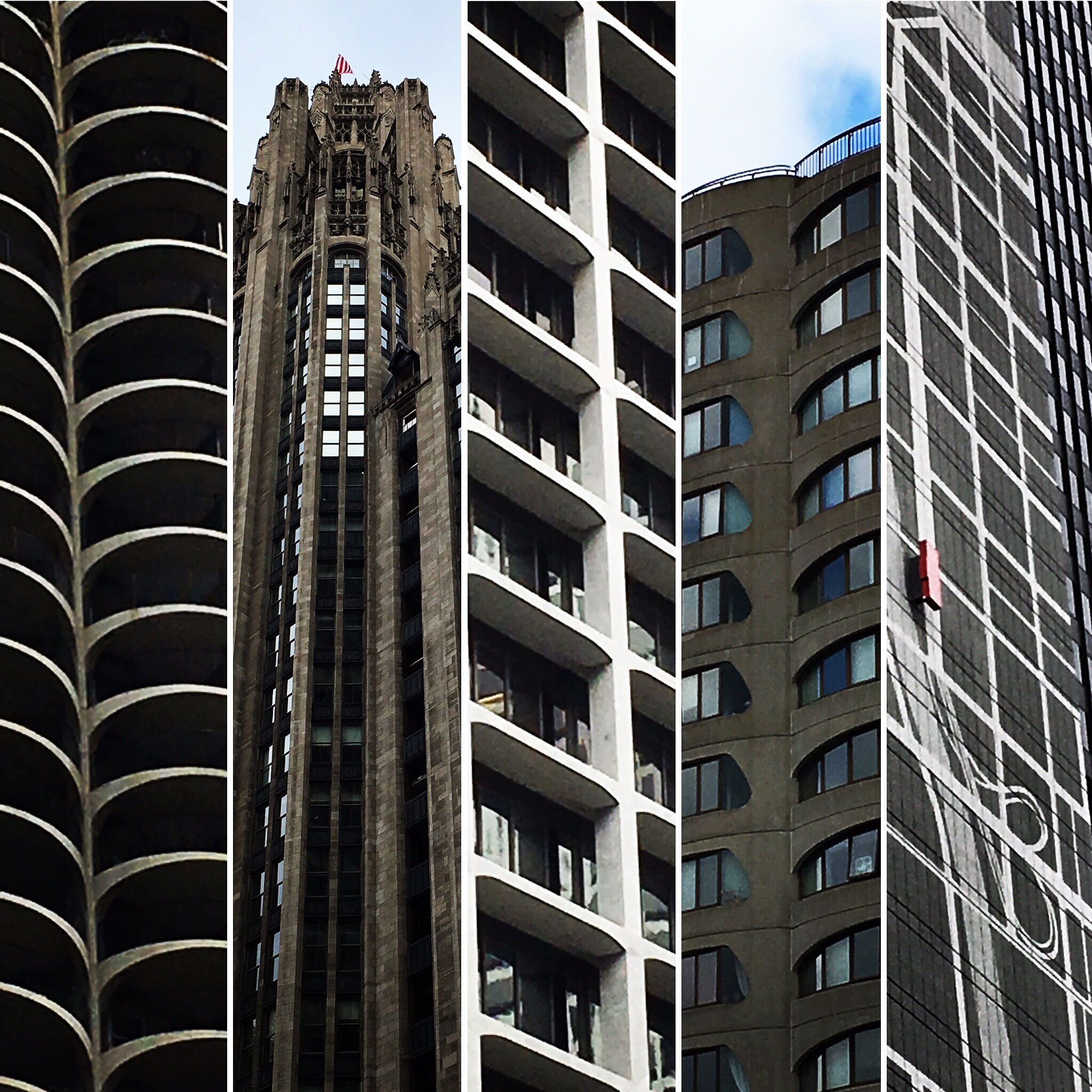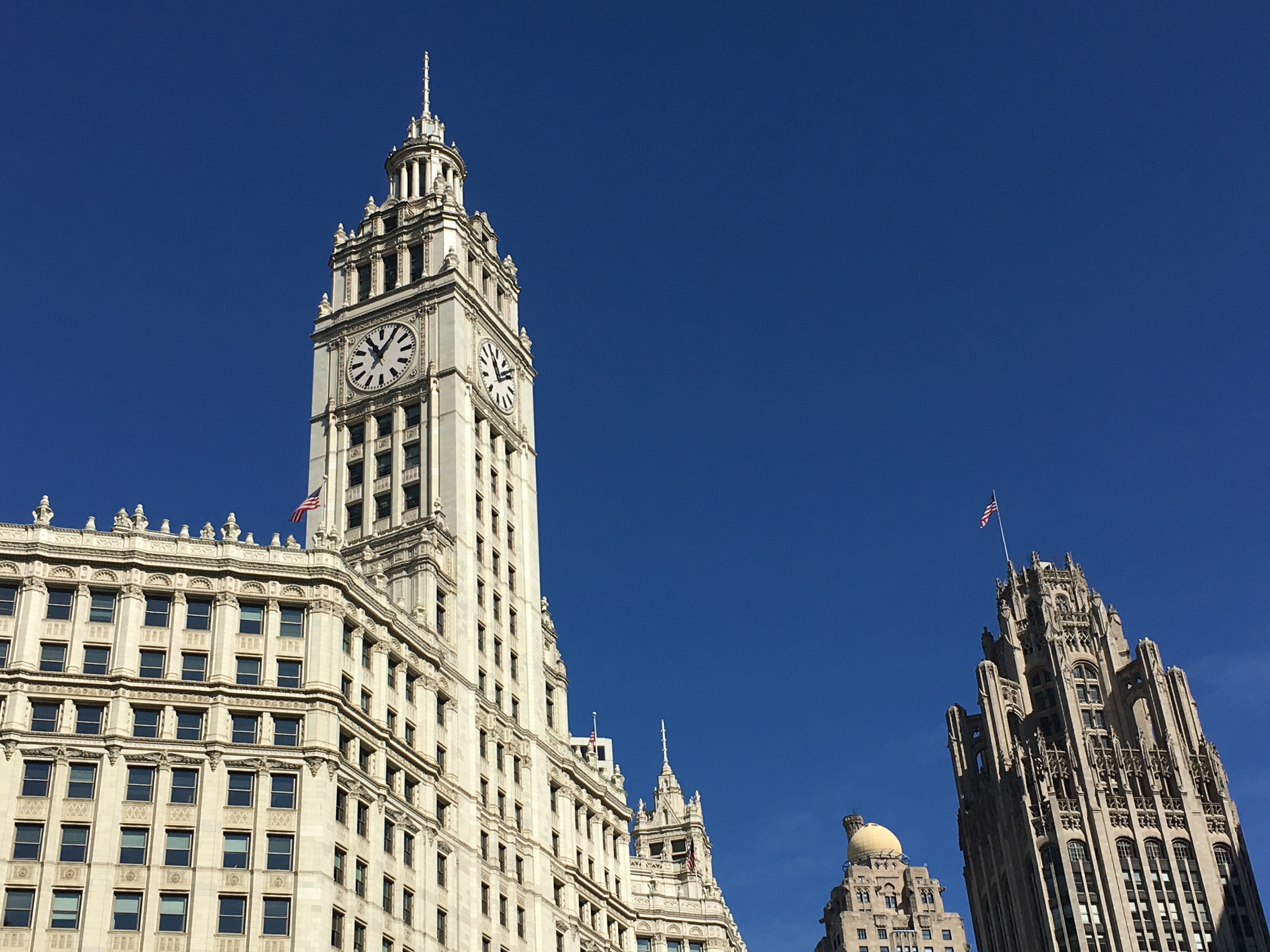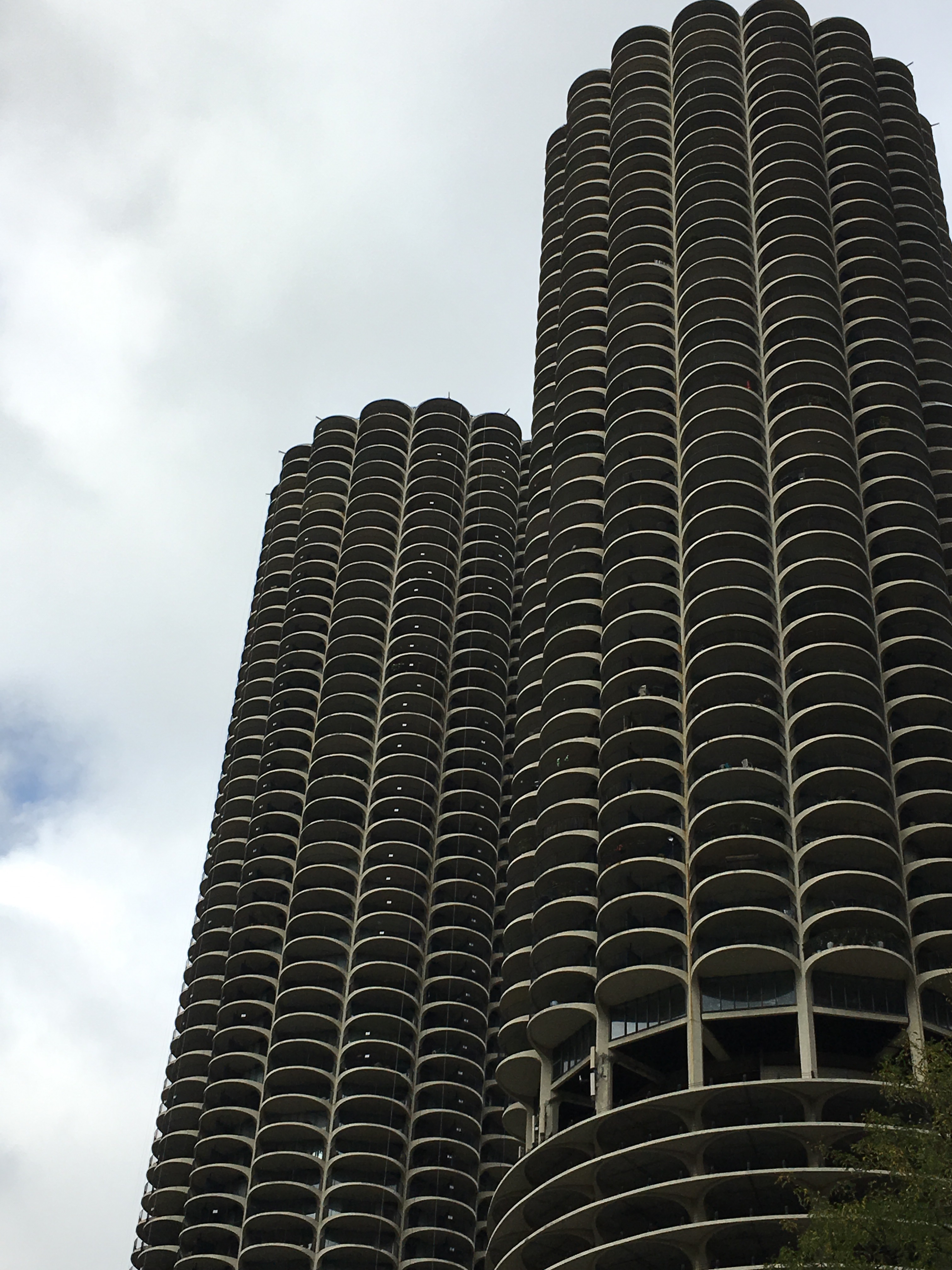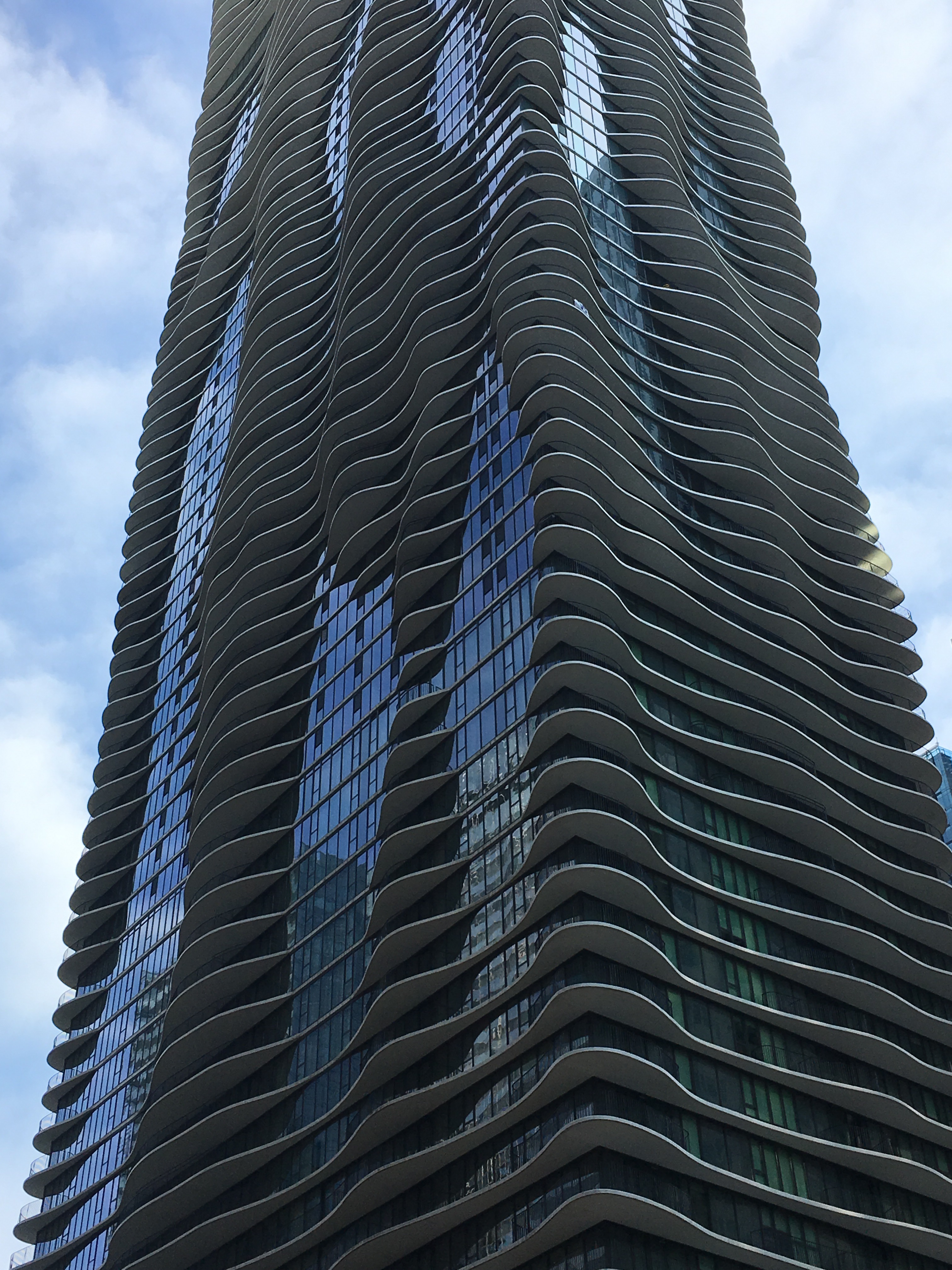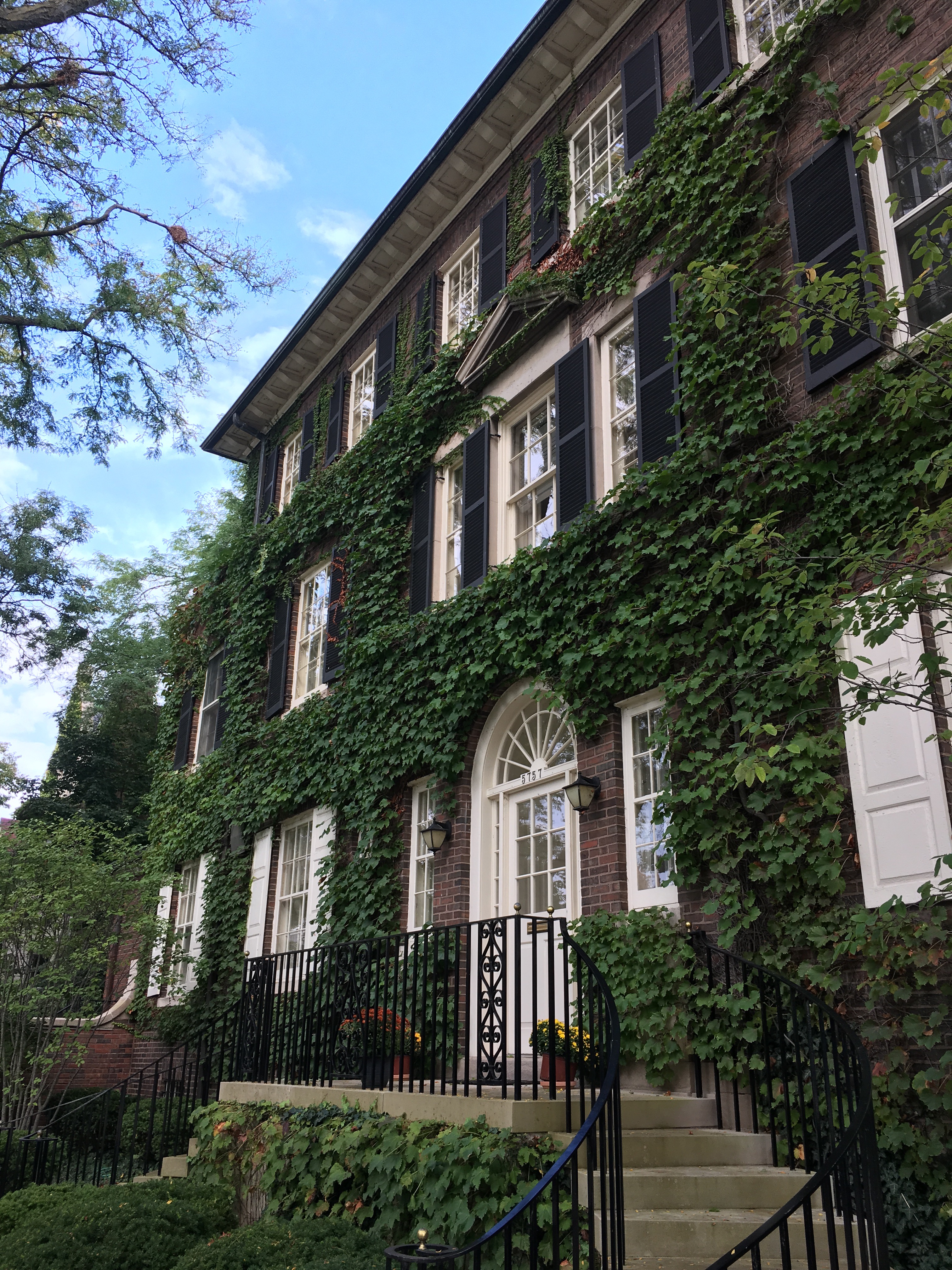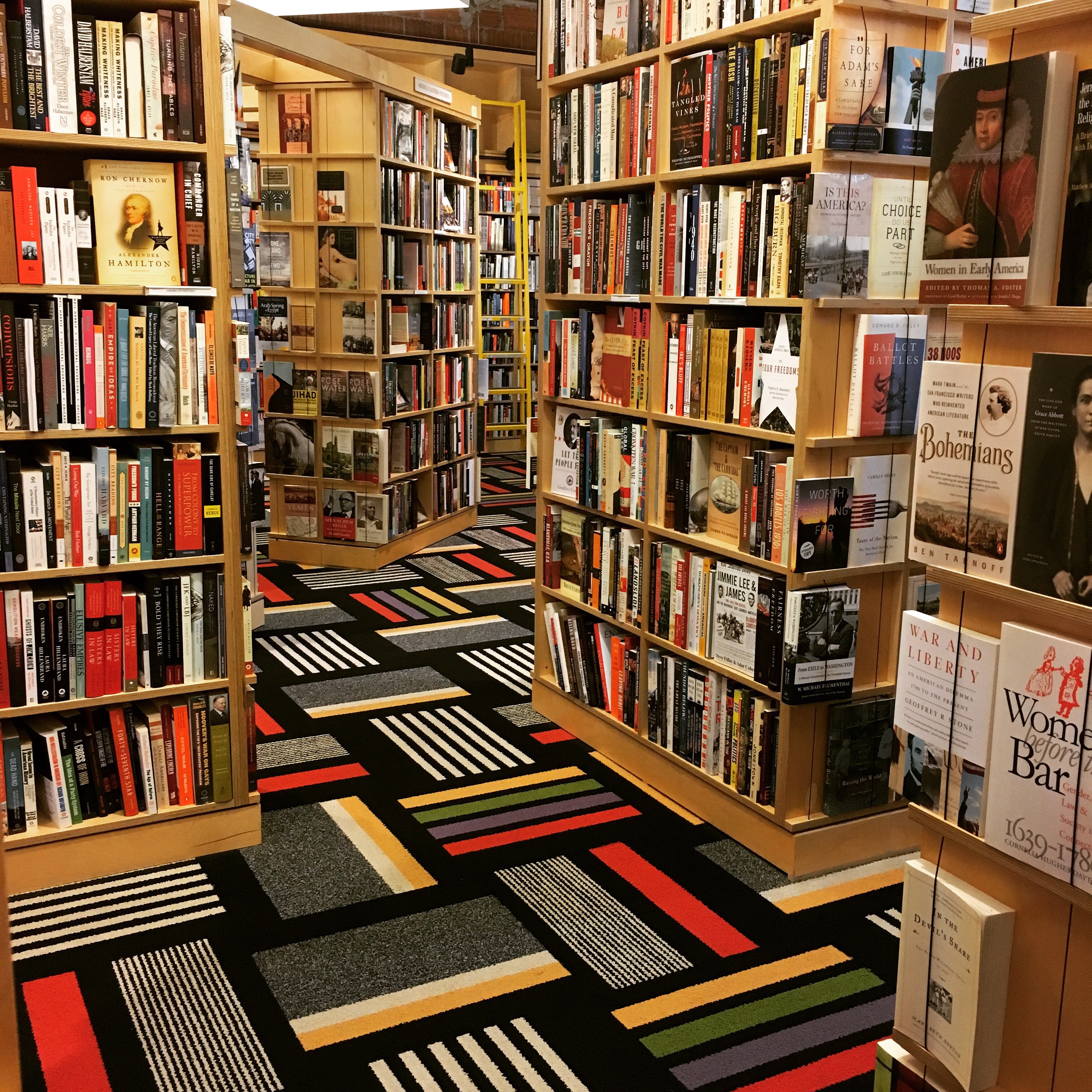Welcome to the land of the smelly onion: Shikaakwa, Illinois. Chicago, as it is now known, no longer smells like the onion-garlic ramps it was named for, it smells like chocolate.
The Chicago River flickers from rich teal to Rio-diving-pool green. Edged by buildings of varying architectural styles, it floats boat after boat to show them off. The cruises pass under 23 stubby iron bridges that look solid but crack open like a seesaw snapped in the middle when tall sailboats pass.
Our cruise of choice, by the Chicago Architectural Foundation, was narrated by a volunteer docent named Shelley, Shirley? Sheila? who could project personality through the mike like a Pixar voice actor. She squealed in surprise halfway down the river, attention caught by a wildly-waving group on the bank – her family. Our narration took a backseat briefly to Shirley’s increasingly high-pitched and still-miked conversation directed at her little granddaughter who’d come to see Nana at work. The boat collectively grinned in appreciation. We were close to the Blommer Chocolate Company factory at this point, the largest cocoa processor/chocolate supplier in North America, responsible for the mouthwatering smell in the air. I guessed the little girl had picked the ambush spot for that reason, although I once lived upstairs from a bakery and smell is torture when not followed by something you can eat.
Sheila had a natural patter, describing alternate buildings, then filling in the blanks as the boat turned down different spurs and circled back home.
We learned how some buildings are contextualized, with a wide curving front following the sweep of the river, or shiny two-toned green glass mimicking its colour and reflecting the towers around it. Others, traditional modernist buildings, stand soldier-straight and perfectly rectangular, with exoskeletons to optimize internal division of space while wasting no effort on outside decoration. One has a truss on top that somehow holds up half the building, “like your arm does for your leg,” an explanation that brought me no clarity. Another neo gothic building is top-and-tail’d with lacy stonework that merges at its middle into art deco with dark recessed windows and flat ornamentation. There are nods to Greek columns and temples, and the Jewelers Building has an impressive cupola that back in the day was Capone’s private speakeasy. It also boasted a car elevator to provide jewelers a fighting chance of moving merchandise from car trunk to office without getting hijacked. The buildings go on and on: one with windows pinched at the corners into little pillows, two circular ones petaled to look like sunflowers from above but to my eye look like a spirograph drawing. My favourite is named Aqua, a residential/office/hotel tower with balconies that wave in and out from 2 to 12ft, and shiny glass windows that create the illusion of water streaming and puddling down the side.
Shelley didn’t only talk architecture. After she covered the whole garlic/leek origin story, she explained the Chicago River flows backwards away from Lake Michigan. This was an engineering feat designed in 1900 to reduce the outbreaks of cholera and typhoid from having a heavily polluted river flow into the main source of drinking water. It reversed to flow south past St Louis into the Mississippi and ultimately the Gulf of Mexico. Presumably Missourians suggested at some point that cleaning it up might have been another way to go.
Starting with the river cruise meant the rest of the weekend I exposed my tourist status by walking around, eyes to the sky, staring at towers that disappear into the afternoon fog. Oh, and also by taking the Chicago Crime Tour.
The Crime Tour was a “bus-limousine” (which means bus) that drives around to sites related to mobsters, various serial killers or other criminal stories about Chicago. The guide’s enthusiasm was well intentioned if a bit off-putting, ranging from jokes he laughed at himself to prove they were funny, to putting on voices and doing a full-body reenactment of the capture/assassination of John Dillinger. But while we blinked at the empty lot that was once the site of the St Valentine’s Day Massacre, he also added some more unusual facts:
– Chicago was established in 1837 and had built its international reputation for crime by 1840.
– John Dillinger acid-washed his fingerprints and got plastic surgery to evade police in 1934. The surgery was limited to removing some moles and filling in his chin dimple, which was apparently enough to foil the cops.
– There is a group called The John Dillinger Died for You Society that recreates his last few seconds once a year on July 22. They live by the slogan “Lie down on the floor and keep calm,” which doesn’t seem as universal as you might hope for as scriptures go.
– Al Capone opened up soup kitchens and ran school programs before that whole unfortunate Feb 14th massacre thing. At his peak, Al was making $123k/yr, or about $1.5m. Between that, the syphilis, and going crazy from the mercury treatment, he had a rough go of crime.
– It was four times easier to get a drink during prohibition in Chicago than it is today.
The most unexpected sites we passed included the Walgreens of the 1982 Tylenol scare that caused 7 deaths from cyanide-laced pills + 270 copycat cases, and the McDonald’s where three workers sold crack from the drive thru if you said the magic phrase. They were caught when police inadvertently ordered more coke than expected.
But there is so much more to Chicago than architecture and gangsters. There are neighborhoods like Hyde Park, with ivy-covered brownstones on tree-lined avenues, and bookshops that are like the best kind of maze you could get lost in forever. There are top places to eat, like Alinea, and Girl and the Goat, and Grace that we couldn’t get into, and just as great restaurants like Roister and Wildfire Chicago and STK that we could. Plus Navy Pier with its Centennial Wheel and Millennium Park with its Millennium Bean. And theatre and comedy and museums and art galleries. And best of all, rivers that smell like chocolate.

